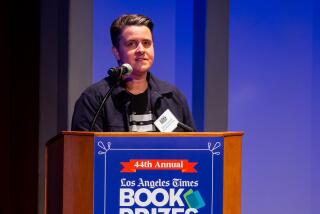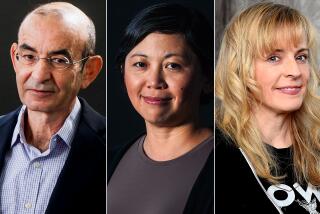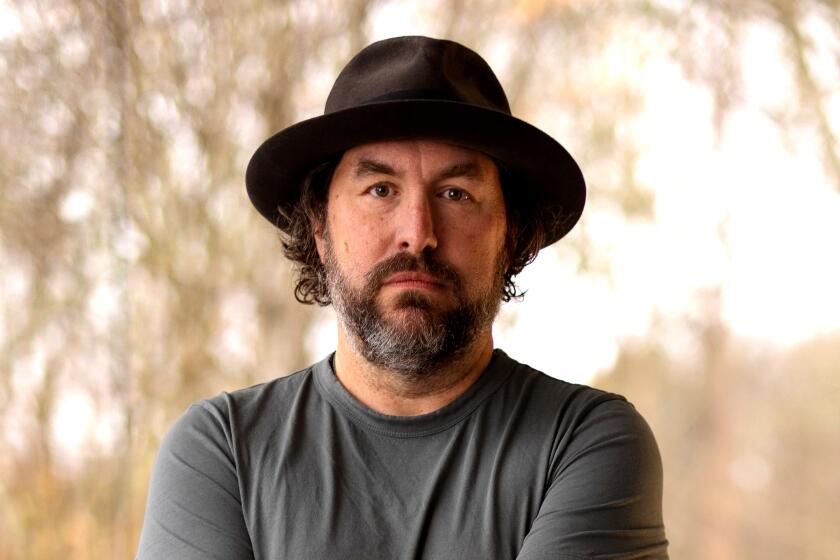Are Newbery winners the new not-to-read list?
WASHINGTON — The Newbery Medal has been the gold standard in children’s literature for more than eight decades. On the January day when the annual winner is announced, bookstores nationwide sell out, libraries clamor for copies and teachers add the work to lesson plans.
Now the literary world is debating the Newbery’s value, asking whether the books that have won recently are so complicated and inaccessible to most children that they are effectively turning off kids to reading. Of the 25 winners and runners-up chosen from 2000 to 2005, four of the books deal with death, six with the absence of one or both parents, and four with such mental challenges as autism. Most of the rest deal with tough social issues.
An article in October’s School Library Journal -- “Has the Newbery Lost Its Way?” by children’s literary expert Anita Silvey -- touched off the debate, now in full bloom on blogs and in e-mails. It is the new flashpoint in the struggle to draw children into the delicious world of books at a time when the National Endowment for the Arts says fewer Americans are choosing to read than they did 20 years ago, risking social and economic consequences.
The organization that awards the Newbery -- and several other book prizes, including the Caldecott Medal for best American picture book for children -- defends its methods and its record.
“The criterion has never been popularity,” said Pat Scales, president of the Assn. for Library Service to Children, a division of the American Library Assn. “It is about literary quality. We don’t expect every child to like every book. How many adults have read all the Pulitzer Prize-winning books and the National Book Award winners and liked every one?”
But Silvey and other critics have said the Newbery committee, which will award the 2009 medal Jan. 26, has a special responsibility because it is so influential.
“I can’t help but believe that thousands, even millions, more children would grow up reading if the Newbery committee aimed to spotlight books that are deep and beautiful and irresistible to kids,” said Lucy Calkins, founding director of the Reading and Writing Project at Columbia University’s Teachers College and a professor of children’s literature.
In an interview, Silvey said one example of inaccessibility is the 2008 winner, “Good Masters! Sweet Ladies! Voices From a Medieval Village” by Laura Amy Schlitz -- a series of monologues that Deborah Johnson, manager of the extensive book section at Child’s Play in Washington, agreed would be difficult for most kids to read on their own.
“Quality and popularity are not mutually exclusive concepts,” said Silvey, editor of several books, including “Children’s Books and Their Creators,” an overview of 20th century children’s books. “They can be found in the same book. . . . If you don’t think of children at all in the equation, what you get are books that work for adults.”
Yet Johnson said she was reluctant to criticize the quality of recent Newbery winners: “To choose books that people feel are going to stretch a young person’s mind is not a bad thing.”
86 years young
The Newbery Medal was launched in 1922 -- the first children’s literary award in the world -- to promote the publishing industry by choosing “the most distinguished contribution to American literature for children.” There are now numerous awards given for young people’s literature by Scales’ organization and others -- some even selected by children -- but the Newbery remains the most prestigious.
A 15-member committee of librarians and other literary experts is chosen each year to select the Newbery winner and the runner-up “honor” books.
Eligible books -- fiction, nonfiction and poetry -- must be by an author who is a citizen or resident of the United States and written for “ages up to and including 14.” Librarians have said some parents and teachers mistakenly think the Newbery is aimed for children ages 8 to 12 and give children developmentally inappropriate books.
Past must-reads
Some Newbery winners have become classics, including Louis Sachar’s “Holes” in 1999, Lois Lowry’s “The Giver” in 1994 and Ellen Raskin’s “The Westing Game” in 1979. Some runners-up have too, including “Charlotte’s Web” by E.B. White in 1953; that year, the medal was given to “Secret of the Andes” by Ann Nolan Clark.
Winning books become instant bestsellers. Many bookstores and libraries have Newbery sections, and popular television shows interview the winners each year. Textbooks given to prospective teachers and librarians include lists of Newbery winners, and many master’s and doctoral theses are written about them.
A book’s appeal to students is important in literacy acquisition, according to experts -- and kids.
“If you force someone to read a book, the less likely you are to like it,” said Elias Feldman, 13, an eighth-grader at private Landon School in Bethesda, Md. Teachers, he said, like to select books ripe for analysis rather than for a gripping narrative. He said he understands that motivation but thinks kids would read more if their assigned books engaged them.
What kids want
John Beach, associate professor of literacy education at St. John’s University in New York, studied 30 years of book lists chosen by children and adults. He found that less than 5% are on both the list of Children’s Choice Awards -- named every year by the International Reading Assn. -- and the library association’s annual Notable Children’s Books list, which includes many Newbery and Caldecott winners.
Books prized by children had stories and characters “accessible” to their lives, Beach’s report concluded. “The Newbery has probably done far more to turn kids off to reading than any other book award in children’s publishing,” he said.
Richard Allington, an education professor at the University of Tennessee and a literacy expert, wonders why adults seem to identify literature with books that are sad and difficult. So does Temuulen Uranbayar, 11, a fifth-grader at Long Branch Elementary School in Arlington, Va.
He says he loves to read -- but not always the books his teachers want him to. “I love funny chapter books, when I get to pick,” said Temuulen.
He is part of a project in 12 Arlington schools that anecdotally bears out the contention that kids select different books than adults.
Kristi Jemtegaard, coordinator for youth services for the Arlington Public Library and a former member of a Newbery selection committee, has recruited youngsters at 12 public schools to review books. At Long Branch, about 15 fifth-graders volunteer to skip lunch and recess once a week during the fall to evaluate books that she believes have a chance to win the Caldecott Medal, the picture-book award. They will vote soon -- and learn next month whether they agreed with the real Caldecott committee.
Last year, after reviewing about a dozen books, only one of the school committees chose the Caldecott winner: “The Invention of Hugo Cabret,” by Brian Selznick.
There was some controversy over that selection too, with critics noting that it was more a storybook with illustrations than a book driven by pictures.
Jemtegaard said that the Newbery selection process, though “not perfect,” is valuable because it raises the profile of children’s literature -- and because “it makes us think harder about what we do.”
More to Read
Sign up for our Book Club newsletter
Get the latest news, events and more from the Los Angeles Times Book Club, and help us get L.A. reading and talking.
You may occasionally receive promotional content from the Los Angeles Times.







